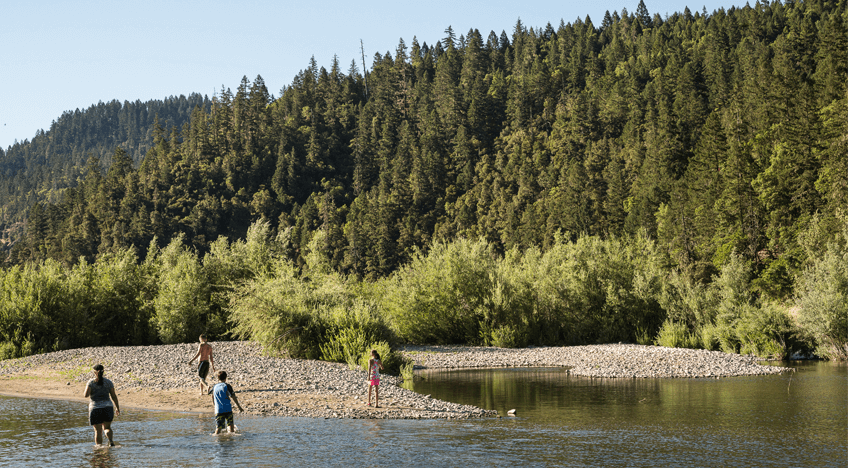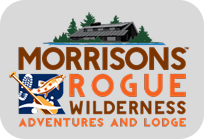
Flora and Fauna of the Rogue River
A BRIEF HISTORY TO SET THE SCENE:
People started to be drawn into the area in the mid-1800s for a lure of told stories about gold and pelts in the area. The Native Americans who inhabited the land were friendly at first to fur trappers in the area until a feud started when fur trappers murdered a couple of lone Indians. This began the Rogue River Wars of 1855-1856, but some say it started as early as 1830. This was a war between the US Army and local militias against the Native Americans. Though many tribes lived in the area, they were grouped together as the Rogue River Indians. Given their name as the “Rogue Indians,” the name River of the Rogues was created, which has been shortened to the Rogue River. The war ended gruesomely and the Tolowa and Takelma people were forced onto reservation lands, where many of them died of disease, lack of local and proper food and water, and lack of their culture more importantly. The Rogue River has a very sad and brutal history, but also one of great importance and interest to many who experience the canyon via raft, foot, or drift boat.
The River is 215 miles (ca. 346 km) long from the Cascade Range to the Pacific Ocean, it begins near Crater Lake and ends at Gold Beach Oregon. The Rogue River is one of the eight original rivers named in the Wild and Scenic Rivers Act of 1968. The Rogue-Klamath-Siskiyou National Forest and the Kalmiopsis Wilderness surround the Rogue on its journey to the Ocean. The Kalmiopsis Wilderness houses the oldest rocks in the canyon coming from the Earth’s mantle as well as the beautiful yellow Kalmiopsis flower found only there in the world. The Rogue River Basin is among the four most diverse temperate coniferous forests of this kind in the world, which contains 3,500 different plant species!
[ngg_images source=”galleries” container_ids=”1″ display_type=”photocrati-nextgen_basic_thumbnails” override_thumbnail_settings=”0″ thumbnail_width=”240″ thumbnail_height=”160″ thumbnail_crop=”0″ images_per_page=”20″ number_of_columns=”0″ ajax_pagination=”0″ show_all_in_lightbox=”0″ use_imagebrowser_effect=”0″ show_slideshow_link=”0″ slideshow_link_text=”[Show slideshow]” order_by=”sortorder” order_direction=”ASC” returns=”included” maximum_entity_count=”500″]
Flora of the Area
The local flora or the vegetation of the area is quite unique. We have a couple of different sections that we separate into zones depending on the difference in climate and what forest it is in. Starting at the upper reaches of the Rogue River you will find incense cedar, white fir, and Shasta red fir. These are beautiful large trees. Further downstream we find more of a diverse mix of conifers, broadleaf evergreens, and deciduous trees and shrubs. There are huge ponderosa pine, Douglas-fir, madrone, manzanita, Jeffrey pine, and oak throughout the entire canyon. There are also orchards, croplands, and pastureland that have been created due to human movement into the area such as the Rogue River Ranch, and many of the historic lodges in the area as well. Closer to the river in the riparian zones include willows, red alder, white alder, black cottonwood, and Oregon ash. Towards the end of the Rogue River, you see oak savanna, prairie vegetation, and seasonal ponds. The lower Rogue passes through the Southern Oregon Coast Range where Douglas-fir, western hemlock, tan oak, Port Orford cedar, mountain laurel bay, western red cedar, alder, and Sitka spruce are found. Coastal forests are “the most productive in the world” also harboring many different ferns, lichens, mosses, and watch out for the pesky poison oak that covers a lot of the area!
Flowers are abundant in the area and are year-round in the canyon, though in the springtime they are more populous. White, yellow, and purple iris layer the grounds of the rogue, which at times you can smell around the corner. There are rhododendrons that can be found that have been brought in, foxgloves, evening primrose, elegant lilies, and so many more, remember there are 3,500 different types of species in the whole forest!
[ngg_images source=”galleries” container_ids=”2″ display_type=”photocrati-nextgen_basic_thumbnails” override_thumbnail_settings=”0″ thumbnail_width=”240″ thumbnail_height=”160″ thumbnail_crop=”0″ images_per_page=”20″ number_of_columns=”0″ ajax_pagination=”0″ show_all_in_lightbox=”0″ use_imagebrowser_effect=”0″ show_slideshow_link=”0″ slideshow_link_text=”[Show slideshow]” order_by=”sortorder” order_direction=”ASC” returns=”included” maximum_entity_count=”500″]
Fauna of the Area
The Rogue River is home to many different fauna or animals that come in all shapes and sizes. The Rogue River is said to contain “extremely high-quality salmonid habitat and has one of the finest salmonid fisheries in the west” I find this true, though, stocks have become less abundant than in historic years past. However, with many of the dams now removed the Rogue is becoming a more prosperous fishing river than many others in the area. Our wild fish habitat is healthy in the Rogue River, and we also have hatchery fish that are taken from “brut” stoke meaning that each year a new wild fish will be chosen to fertilize all the eggs in the hatchery thus keeping the stock of fish new each year. Our salmonids found in the river include Coho salmon, spring and fall Chinook salmon, and summer and winter steelhead. Native species of freshwater fish found in the watershed include coastal cutthroat, trout, Pacific lamprey, green sturgeon, white sturgeon, Klamath small-scale sucker, prickly sculpin, and riffle sculpin. We also have many nonnative species including goldfish, American shad, pike minnow, carp, yellow perch, brown bullhead, catfish, black crappie, and red-side shiner.
We also often see the American black bear, black-tailed deer, bald eagles, ospreys, great blue heron, the green heron, kingfishers, water ouzels, red-winged blackbirds, woodpeckers, Steller jays, Canada geese, mergansers, and mallards. More rare to see are golden eagles, river mink, river otters, Western turtles, and an occasional seal on the lower end of the river. If you are lucky, you might even be graced by a beautiful Arctic Blue butterfly. There are also rattlesnakes and ticks to be aware of if you are hiking the Rogue River Trail, or just walking around the river corridor.
[ngg_images source=”galleries” container_ids=”3″ display_type=”photocrati-nextgen_basic_thumbnails” override_thumbnail_settings=”0″ thumbnail_width=”240″ thumbnail_height=”160″ thumbnail_crop=”0″ images_per_page=”20″ number_of_columns=”0″ ajax_pagination=”0″ show_all_in_lightbox=”0″ use_imagebrowser_effect=”0″ show_slideshow_link=”0″ slideshow_link_text=”[Show slideshow]” order_by=”sortorder” order_direction=”ASC” returns=”included” maximum_entity_count=”500″]
